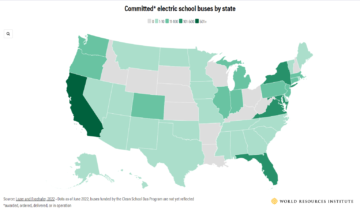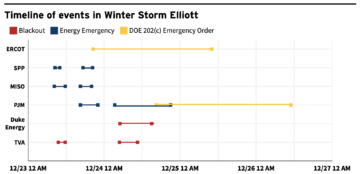By Jim Ringold
“Solid state” is a very popular buzzword these days. Our topic in this series is solid-state electronics, electronic circuits built out of solid materials. In physics, it refers to the electromagnetic, structural, or thermodynamic properties of a solid. Electronic vehicle (EV) discussions also brings us to solid-state batteries containing an electrolyte liquid or jelly.
At the basics, ice is water in a frozen state. The molecules are slow moving. As ice gets warmer, it melts and returns to its liquid state, water. Heat it more and it will turn to gas (evaporate). The same is true of solid-state electronics. As they get warmer, they tend to melt from the electron flow. When they melt, they stop working. This is why in a Tesla EV there is coolant circulated to the computer located behind the glovebox to keep it within its correct operating temperature range. It gets warmer when it works (processes) harder. You will notice this heating when in heavy use in your cell phone as well.
The solid-state devices distributed around the EV also get hot. It is not practical to liquid cool them (battery excepted), so other solutions must be used, including a metallic heat sink to radiate the heat to the air around it for cooling.
Solid State 101 — Integrated Circuit
The name says it all — integrated! The integrated circuit is variously called an IC or a microchip, or commonly just a “chip.” Solid-state chip designers soon learned that by using photographic technology, they could lay out the design of a chip with lots of “discrete” function chips built into one integrated circuit on a chip. Better yet, they could design “digital” chips that could communicate with “analog” (mechanical) devices, such as a car door lock solenoid.
The MOFSET IC (metal-oxide-semiconductor field-effect transistor — no wonder it goes by MOFSET) chips are reliable, easy to manufacture (if you have the facility), and can be put together in a circuit board in a building block configuration. ICs are everywhere, in PCs (personal computers), mobile phones, and a growing number of home appliances. Since back in the 1960s, these metal-oxide-silicon (MOS) IC chips have gotten smaller, use less and less power, and contain more and more of the equivalent of thousands of discrete transistors. And it doesn’t have to be said that the designs are functioning faster and getting smarter and more capable.
But as the current chip shortage shows, the chip design and manufacturing setup is complicated, slow, and expensive. Chips are only profitable when millions are produced and sold. This is why manufacturers have no interest is setting up production of older, basically obsolete chips used in most automobiles.

Image free to use.
When automotive manufacturers first adopted ICs, they looked for rugged and of course cheap ICs. Then they had to design circuit boards to mount them on with rugged and reliable connectors to connect to the vehicle wiring. And if an IC is substituted, it is likely the circuit board would have to be changed, redesigned, as well. Vehicle manufacturers obviously resist doing this. It takes time, it costs money, and there are complications in replacement interchangeability.
This is one reason why Tesla has not suffered from the chip shortage as badly as other automotive companies. Since all the Tesla ICs communicate with one central computer, the computer software can be changed (reprogrammed) in the computer so that it can continue to communicate with the slightly different IC performing the same basic function. Matching software versions with specific serial numbered cars can keep track of the chip changes much more easily than keeping track of individual little circuit boards.
This change to the utilization of a central computer is the subject of Part 3. This central computer is a “start from scratch” project, not something that can be done in an existing vehicle. Plus, the computer needs to communicate with a newer and faster breed of ICs. So, a manufacturer has to have a whole new set of circuit boards and vendors. It has taken Tesla years to get there. As you shall see, it is not a trivial transition.
Appreciate CleanTechnica’s originality? Consider becoming a CleanTechnica Member, Supporter, Technician, or Ambassador — or a patron on Patreon.

Source: https://cleantechnica.com/2021/10/20/the-road-to-solid-state-evs-part-two/
- Advertise
- All
- around
- automobiles
- automotive
- Basics
- batteries
- battery
- board
- Building
- car
- cars
- change
- chip
- Chips
- cleantech
- Cleantech Talk
- Companies
- Computer Software
- computers
- continue
- Costs
- Current
- Design
- Devices
- Electronics
- EOS
- EV
- Facility
- First
- flow
- function
- GAS
- Growing
- Guest
- Home
- HTTPS
- ICE
- ICS
- Including
- interest
- IT
- keeping
- learned
- Liquid
- looked
- Manufacturer
- manufacturing
- materials
- Mobile
- mobile phones
- money
- operating
- Other
- Patreon
- PCs
- Personal computers
- phones
- Physics
- podcast
- Popular
- power
- Produced
- Production
- project
- range
- returns
- Series
- set
- setting
- So
- Software
- sold
- Solutions
- State
- Technology
- Tesla
- The Basics
- time
- track
- us
- vehicle
- vendors
- Water
- within
- works
- years





